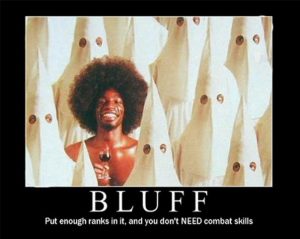Last week I visited a church built shortly before the plague of the 17th century hit Switzerland. This got me thinking about rolemaster diseases. What I have below is a house rule I have not yet had the chance to play or test. It has just been rolling around in my head for the best part of a week,
I apologise for having missed my last two posts , Friday and Monday, but as you can now guess I have been traveling. I spend most of my time in Switzerland but also went into the black forest region of Germany for my ‘Grimm Sword‘ project. But enough excuses, here is my idea about disease.
The current rules base the severity on the level of resistance roll failure. Fail by 01-25 and you get a mild form of the disease, 26-50 is moderate, 51-100 is serious and 101+ is extreme and normally terminal.
My House Rule
Recently I had a cold or similar virus, it seemed to rush though a day of headaches, a day of sore throat, a day of aching joints and then weeks of a running nose. There were days when I felt almost well again but then at least a week were I was too ill to go running. The point is that my health was not linear. I had ups and downs.
It doesn’t add much complexity, and none to the players side, to modify diseases slightly so they get three additional parameters.
- Minimum severity
- Maximum severity
- Time period
A ‘touch’ of Rabies
The minimum severity would specify that if the resistance roll is failed then rather than possibly just being mild (fail by 01-25) the minimum effect can be controlled. The idea is that it would stop someone just having a touch of Rabies but they will be fine tomorrow.
The maximum severity just specifies the maximum starting severity. I put this in place because of the nature of open ended rolls. The school I went to as a teen ager had 1200 pupils. Baring in mind that 1 in 20 rolls are open ended down and one in 400 are double open ended downwards you don’t want the common cold killing 3 students on average every time a virus went around the school. Put simply not every disease is fatal.
The final parameter is Time period. So a 24hr virus would have a time period of 1 day. Every day you get to roll a new resistance roll. If you make it you get one severity less ill and if you fail you get one severity worse.
Other diseases may have much longer time periods so you are saving every two or three days. This means that people can recover, have relapses, worsen and die and so on.
It makes sense that if the sufferer has lots of rest and food then they will get a plus to their resistance roll. Those that are physically active get a penalty. Characters may well choose to battle on though a minor illness. If they start to get worse and the penalties and symptoms are getting worse then they may think again.
Players quest
Every GM at some point has a players quest where they have to find some ingredient for a cure. Now the longer that quest takes to complete the worse the consequences are going to be.
What I think the real benefit is when the characters have the disease and the potential for them to get worse over time. I am going to apply the penalties they suffer from the condition, as specified in Character Law, to the future resistance rolls. So without help all but the strongest characters are more likely to slowly get worse, not better. All I need now is a magical disease that will infect those smug elves!
The only elves in my games right now are an elf and a half elf in my face to face game. I will not be able to test this is play until the spring. There is a definite plot in here somewhere!









